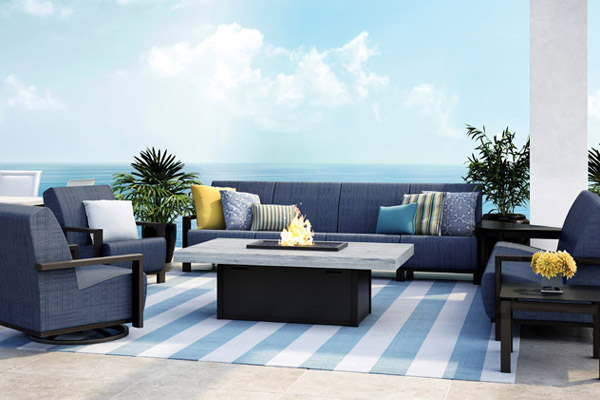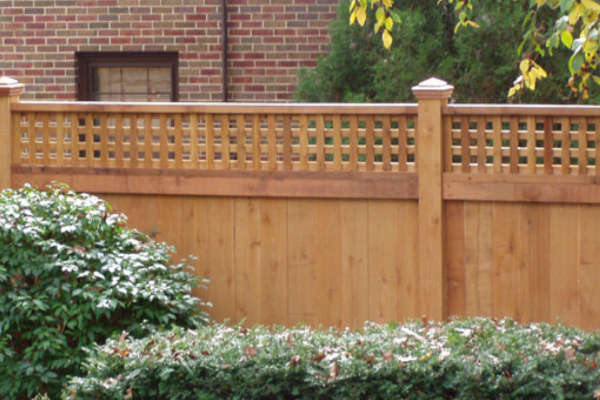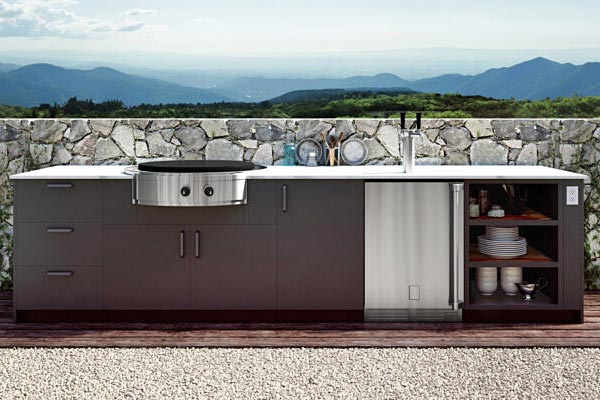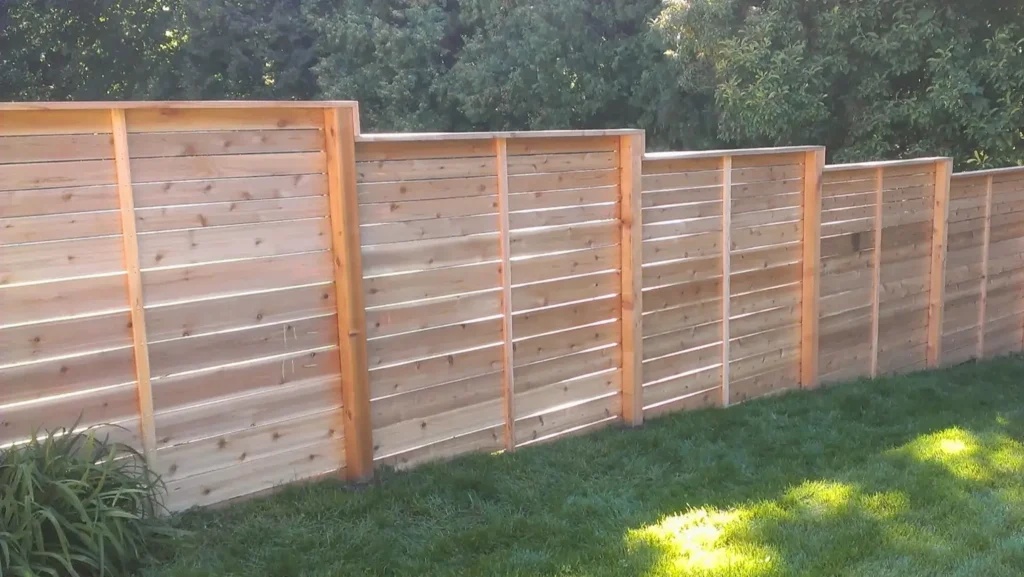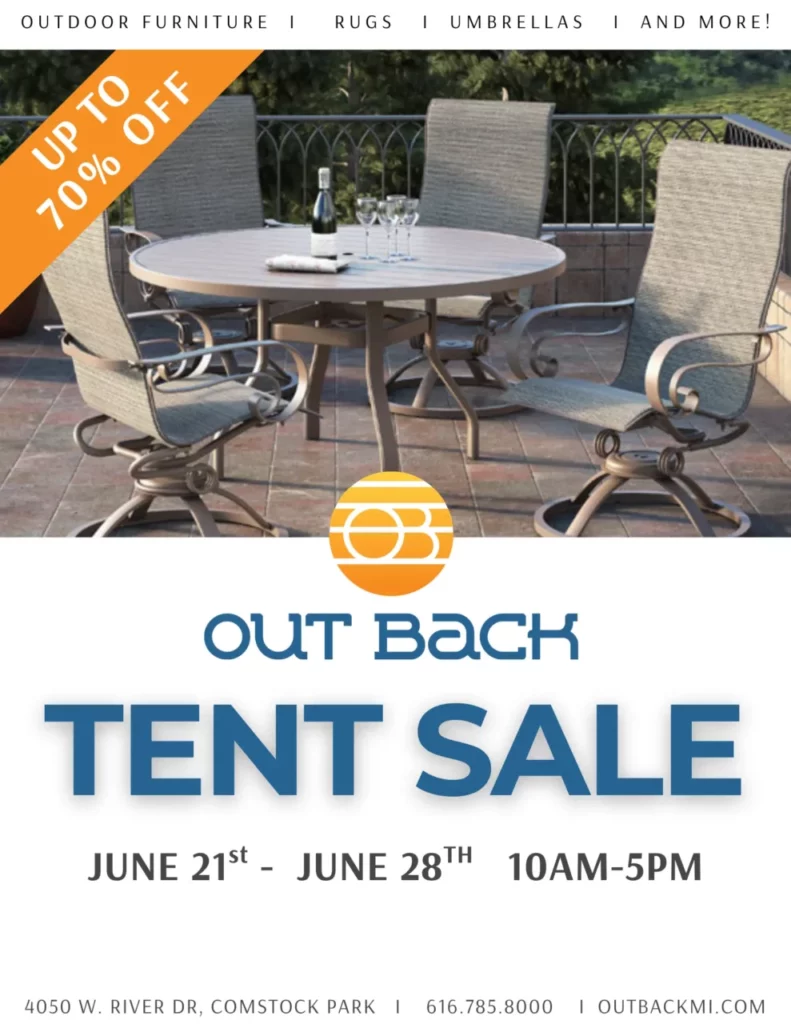Wood fences are a beautifully aesthetic way to add privacy, demarcate property lines, or add a measure of safety to the play area for pets and kids. The appearance and natural wood grain tend to fit right in with any home, and can be built in a variety of styles from traditional to contemporary. When choosing the best wood for a fence in Michigan, it’s important to understand the pros and cons of different wood materials, which will affect the overall appearance, maintenance, and cost.
At Out Back Casual Living and Fence, our top pick for a wood fence is cedar, which is the best option for both longevity and affordability.
Cedar and redwood are great for durability and add gorgeous color to your landscape, and while these materials are long-lasting, they also tend to be more expensive. Pressure-treated pine and spruce are very affordable options with good durability, but they typically require more frequent resealing.
Factors to Consider for the Best Wood Fence Material
When choosing wood fence material, understanding the characteristics of different types will help you choose the best wood for your fence. As with most things in life, there is no one-size-fits-all solution, but rather there are pros and cons to the different wood material options.
Here are some factors that can affect which choice is best for you:
- Climate and weather resistance: Michigan’s snow loads and temperature swings can be problematic for wood that is weak or prone to warping.
- Insect and rot resistance: Some woods, like cedar and redwood, contain oils that naturally repel insects, rodents and decay.
- Maintenance: All wood fences will require regular maintenance like resealing to prevent rot or damage, but wood materials vary in durability and maintenance requirements.
- Overall cost: There are a range of costs associated with wood materials. Typically, more expensive wood has better longevity.
- Aesthetics: The natural shade of the wood is an important consideration for aesthetics; while some wood slats naturally offer rich colors, other woods may require staining or painting to achieve your desired aesthetic.
In addition, Michigan’s temperature swings and moisture contribute to wood fences turning gray, so it’s important to keep up with regular maintenance regardless of what style of wood you choose. For a fence with less upkeep, learn more about other types of fence materials.
The Best Types of Wood for a Fence in Michigan
When it comes to the best type of wood material for a fence, there are really two main categories: durability and affordability. If you want a durable type of wood, the trade-off is the higher cost, and if you prioritize an affordable type of wood, the trade-off is the longevity.
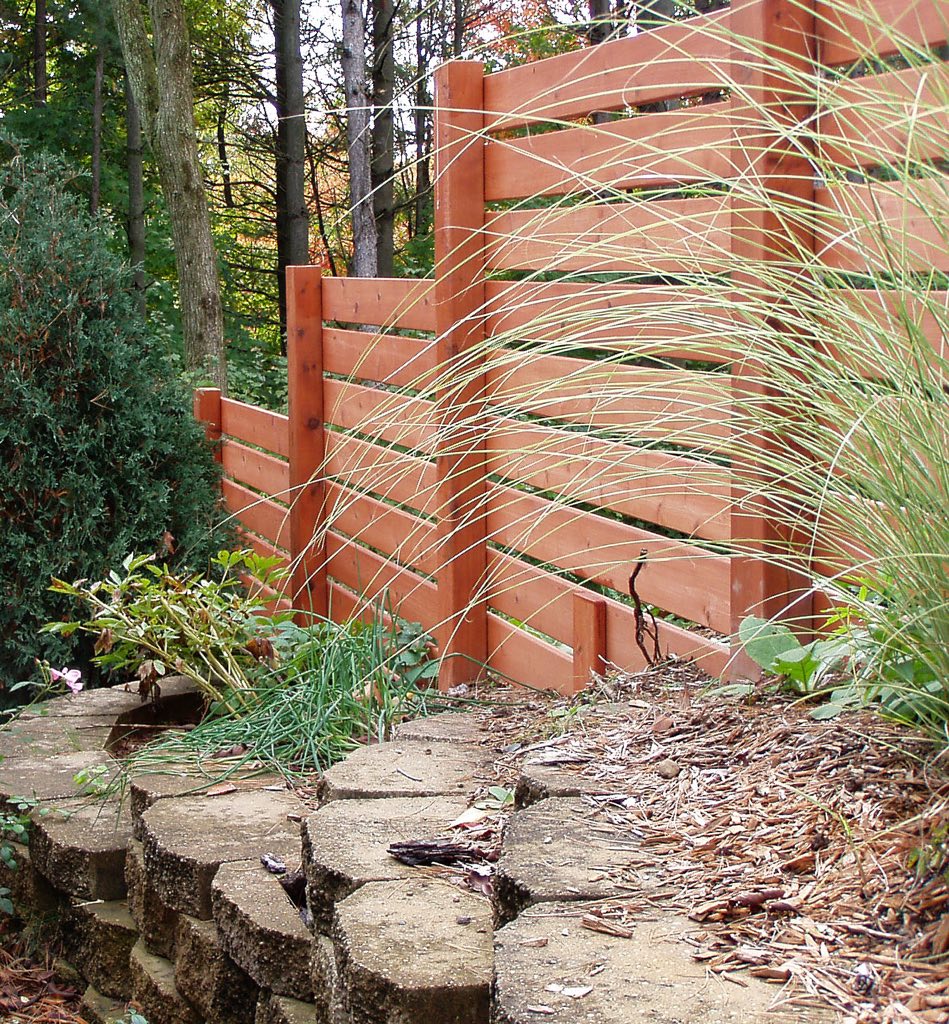
Durable Wood Fences
In this category, cedar and redwood are the best options. A cedar or redwood fence will last 20-30 years with proper maintenance, they are naturally deterrent to pests and rot, and they are both beautiful rich warm colors.
Cedar is our top pick for a wood fence, since it is the most affordable of the durable wood options. One caveat: cedar does not last long in the ground, so if you opt for a cedar fence, you may want pine posts with a cedar wrap. While it is rot-resistant, regularly sealing the wood will ensure the warm reddish-brown does not turn gray.
Affordable Wood Fences
For affordability, pine and spruce are excellent choices, with the caveat that they must be pressure-treated in order to resist rotting in the extreme temperatures and precipitation in Michigan. Untreated wood can be susceptible to cracking or warping, which is why we only recommend pressure-treated spruce.
These woods must be resealed every 1-2 years to avoid rot or decay, so while these are very affordable options, the maintenance levels are higher. In general, you can expect a well-maintained pine or spruce fence to last 10-15 years.
Pine is the best choice of the two, due to its higher durability over spruce. With a uniform light yellowish color, it is fairly easy to seal, stain or paint.

From Planning to Installing, Out Back Fence Does it All
When considering your fence options, the specifics of your yard can make a difference for your wood fence material. For example, if you’re in a low-lying area with a higher moisture content, you may have additional concerns about decay that can influence which option is best for you.
Before you select your fence material, you should talk to an experienced wood fence installer like Out Back. Many of our team members have been installing fences with us for 30 years, and we can walk you through the pros and cons of different fence types based on your specific needs.
When you partner with Out Back Casual Living and Fence, we can handle every step of your fence project from planning to installation, including custom designs based on your unique style and vision.
Just take a look at our extensive wood fence portfolio to get an idea of the possibilities, from rustic to elegant. You’re sure to find exactly what you need with Out Back.
Visit Our Showroom To See the Different Wood Fence Materials
When it comes to wood fence planning, there is no substitute for seeing the materials in person. This will help you get a feel for the colors, textures, and overall aesthetic of the material choices. Our showroom is located on the north side of Grand Rapids, with easy access off 131.
At Out Back Casual Living and Fence, we have over 30 years of experience in designing and installing fences, including fully custom designs. We are dedicated to building you a fence that lasts, with high quality materials that will serve your needs for years to come. Contact us here to learn more about upgrading your yard with a wood fence.
